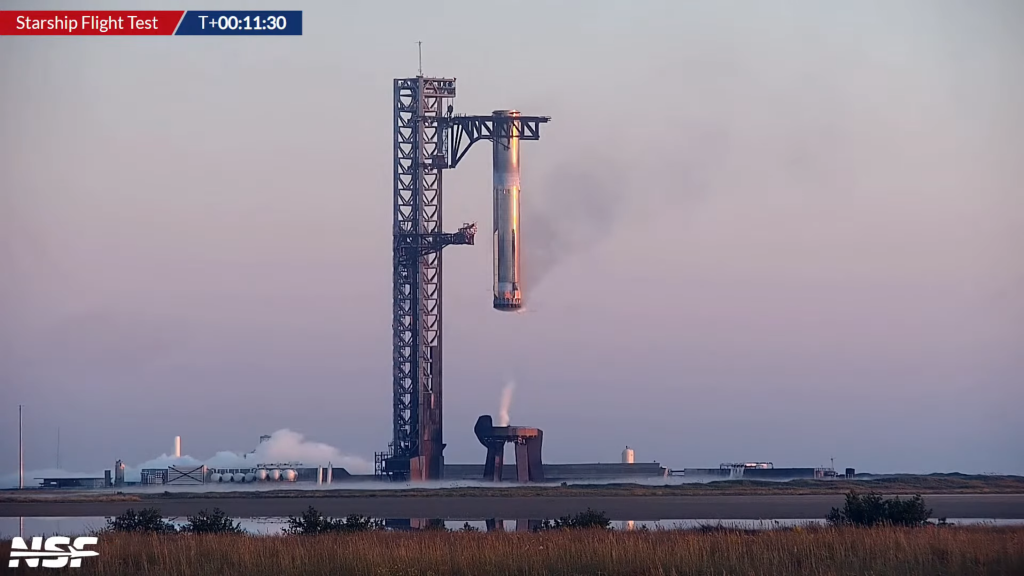(Featured image: YouTube – VideoFromSpace, https://www.youtube.com/watch?v=b28zbsnk-48)
Some hours ago an American private aerospace company landed a rocket booster on earth for the first time in history. There are earlier examples of rockets landing on barges at sea. For the first time in history today, a rocket has been caught with a pair of giant mechanical chopsticks – on Terran soil – at the original launch site from minutes earlier.
Such a phenomenal feat of engineering is sufficiently complex to become magic. What was only a theoretical technical possibility hours ago is now proven “easy”. Success attained in the first attempt.
The whole ordeal from launch to landing is over and done with in less time than it takes to run out of hot water in the shower (about 15 minutes).
It only takes about 100 seconds to land a rocket on Earth. Once the vehicle has made it through the atmosphere – at roughly 3500km/h – it drops the 100km to the earth’s surface in near silence.

Apparently free-falling in silence, the craft can be observed with the naked eye. For 30 seconds it descends from the clouds.
15 Seconds off the ground, a small number of rocket booster engines re-ignite and fire. The morning silence is interrupted for the second time.
No conversation can be heard over the roaring fire.
For fifteen quick seconds, the rocket seems to swing within millimeters of the tower before coming to a complete and graceful stop. Caught precariously, suspended in mid air. The engines cut out. Silence.
The stillness of dawn returns, guarded by the soft and distant hum of industrial ventilation systems.
One third of a rocket is left hanging there. Easy.

What a tremendous success. Everyone will be keen to do it again soon.
For the time being, other nations of Earth are still bound to “the old ways”. Disposable single use rockets.
This technology has now been proven to work here on Earth. What would it take to build such a launch site and landing complex on the Moon?
Developer update: Board creation was mocked up, the database objects were created, and the rendering of boards in the board list was piped through to the template. The next step will be… Rendering the new board. Currently board rendering is skin-walking. To render the new board will involve carving out the templates for where threads will go (currently it is hard coded).
Step one is to plumb all the HTML fields from the template as variables and then populate them with placeholders in the class.

